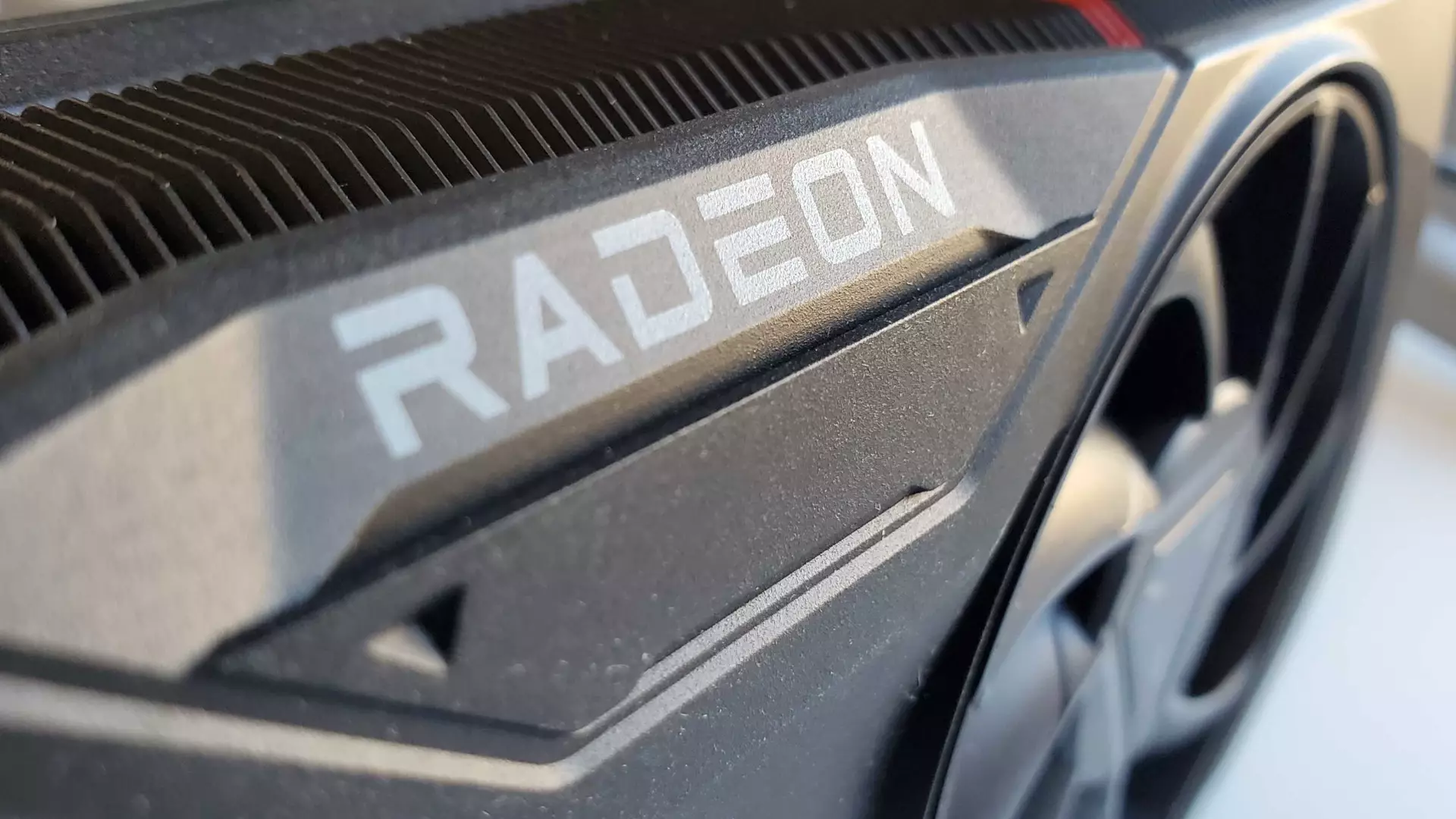In a world dominated by high-resolution graphics and AAA titles boasting rich, intricate environments, it is easy to overlook the simple needs of the average gamer. Frank Azor, AMD’s Chief Architect of Gaming Solutions and Gaming Marketing, recently stirred the pot by defending AMD’s decision to continue producing GPUs equipped with 8GB of VRAM. This provocative stance begs a question that resonates deeply with many in the gaming community: Is there still a place for 8GB GPUs in a rapidly evolving technical landscape?
According to Azor, the majority of gamers are still rooted firmly in the 1080p resolution realm—an assertion supported by data from the Steam Hardware Survey, which indicates that over half of gamers are content with this level of visual fidelity. A glance at the ongoing popularity of budget models like the GTX 1650—which has made its way into the top five GPUs among Steam users—reinforces this viewpoint. This scenario highlights a unique reality in gaming: the disparity between soaring hardware capabilities and the practical requirements of everyday gamers.
The Shift in Gaming Demographics
Another element that deserves attention is the shift in gamer demographics. Many gamers engage with less demanding titles, including a wealth of esports games that do not necessitate ultra-high specs. Titles like “Fortnite” and “League of Legends” retain a massive player base, demonstrating that engagement does not always equate to the latest and greatest hardware. After all, can a powerful GPU translate to a superior gaming experience if the priority is competitive play over graphics? Azor emphasizes that AMD wouldn’t manufacture a product without market demand, implying that there are sufficient gamers who still find value in budget-friendly options.
Moreover, this focus on accessibility is crucial in today’s gaming environment. With the specter of economic constraints looming over many households, keeping gaming hardware affordable while ensuring it meets the needs of a broader audience is a commendable approach. Championing budget GPUs allows newcomers to enter the world of PC gaming without astronomical initial costs, thereby expanding the community.
Performance Versatility: A Deeper Dive
There seems to be an ongoing tension between high-end and budget hardware, especially as discussions around VRAM limitations continue to seep into conversations about future-proofing gaming setups. While top-tier graphics cards boast impressive specifications and eye-popping performance, they come with a price tag that often excludes vast swathes of the gaming population. The RX 9060 XT, for instance, priced at $299 with 8GB of VRAM, presents what could be considered a sweet spot—a desirable balance between price and capability.
In my own gaming journey, I resonate with Azor’s argument. Having relied on an 8GB Radeon RX 6600, I’ve enjoyed a plethora of gaming experiences without encountering significant performance hitches. This revelation highlights a critical aspect of modern gaming: it is possible to enjoy an engaging experience without the need for cutting-edge hardware.
Future-Proofing: A Fragile Balancing Act
The idea of future-proofing a GPU is increasingly overshadowed by the notion of ‘gaming effectiveness’—how well a piece of hardware meets the user’s demands in real-time. Yes, games may demand more in terms of hardware over time, but gamers consistently gravitate towards practical solutions tailored for their specific gaming styles. Azor makes a persuasive case in favor of keeping accessible options in the mix, allowing gamers who focus on 1080p gaming or less demanding titles to have viable choices that won’t force an overwhelming financial burden.
The ongoing debate around memory requirements continues to cloud the GPU ecosystem, with voices arguing whether 8GB can still deliver satisfactory performance in contemporary games. The advancements in gaming PC technology should indeed not be dismissed, but Azor’s perspective urges us to remember that most gaming experiences aren’t exclusively defined by the highest settings or outstanding graphics. If budget GPUs can serve to democratize gaming, they maintain relevance in a sector frequently characterized by excess and exclusivity.
The Value of Choice in Gaming Culture
AMD’s lineup continues to exemplify the importance of catering to a diverse audience by providing an array of memory options. Choices like the RX 9060 XT, available with both 8GB and 16GB, cater to a broad spectrum of gamers and their needs. The market should not solely cater to high-end enthusiasts but should remain inclusive and flexible, enabling more players to partake in the gaming culture without feeling marginalized due to their economic status.
The conversation surrounding the adequacy of 8GB GPUs extends beyond mere specifications; it strikes at the heart of gaming’s cultural ethos. Each player’s needs are unique, and as technology inevitably advances, one thing remains clear: there will always be room for solutions that prioritize accessibility, practicality, and a genuine understanding of the gaming community.

